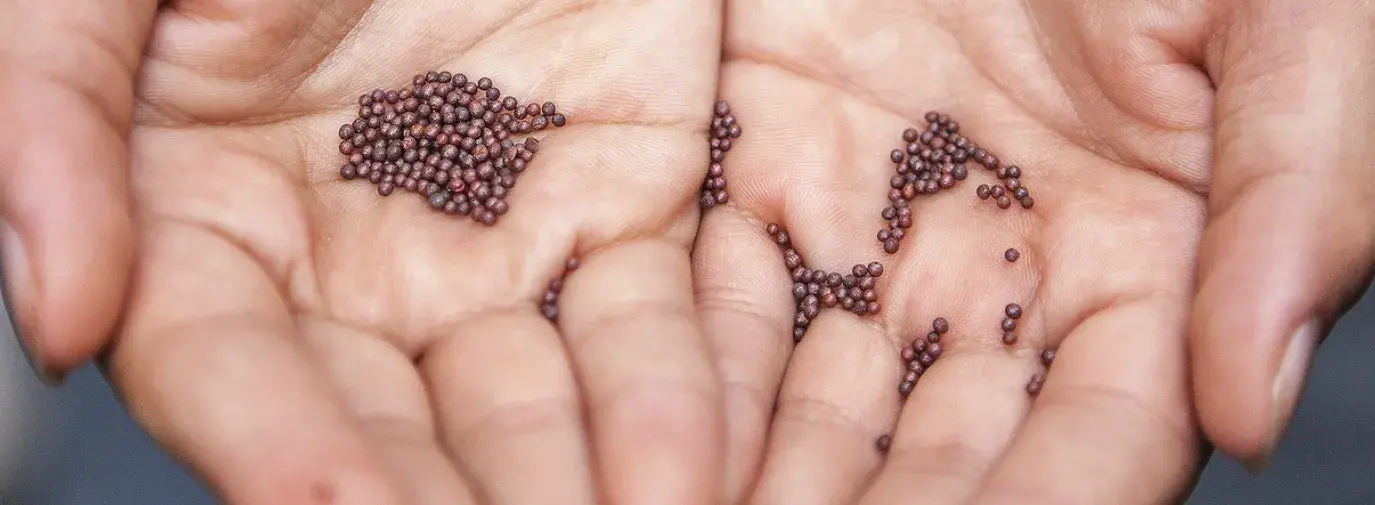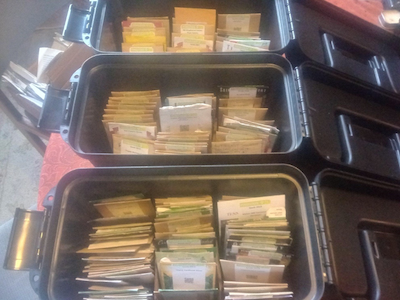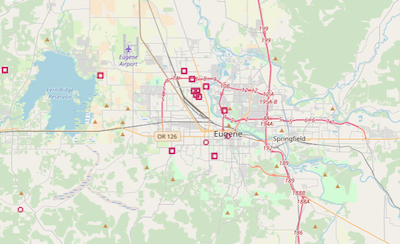
Written by Mike Brunt, a software developer who lives in Eugene, Oregon and uses technology to share the power of growing your own food. Mike is from the UK and also lived in New Zealand where he first became acquainted with permaculture. He went on to become a Permaculture Certified Designer and co-runs the Eugene Permaculture Meetup.
Almost all of our land-based food systems start and end with the same thing: seeds.
Since the beginning of plant life on earth, seeds have fallen onto the soil and grown without any help from humans. In fact, it’s human intervention over the centuries that has gotten us into our current climate emergency.
In many ways, industrial agriculture is the epitome of human intervention and its potential for terrible consequences. The US Environmental Protection Agency estimates that industrial agriculture has contributed 70% of pollution to our waterways. It relies on chemical-based fertilizers that weaken important communities of soil microbes and generate fossil fuel emissions—both which have proven climate impacts. Food is grown on mega farms far from the places it’s consumed. Today’s farming is not only unrecognizable from the agriculture that shaped human life, it’s also putting that life at risk.
Seed Saving as a Climate Victory Gardener
These are important considerations for anyone who grows (or eats!) food, especially with the planet in mind. Humans, agriculture, and the environment are deeply intertwined, and exploring this relationship is a big part of Climate Victory Gardening. How do we garden in a way that supports our health and the health of our planet?
For me, the logical place to start is seeds. The abundance of growing your own food is so apparent in seed saving. I’ve been saving seeds for four years, and now any meal I eat becomes a potential provider of food through the saving and growing of seeds.
Here’s an example: I grew a butternut squash plant from a single seed, which yielded five squash. I made 40 meals and saved over 600 seeds, all from this one plant. If I assume just a 5% success rate from the seeds I saved (a conservative estimate), that means I could have 30 squash plants growing just a year later. Or, better yet, my neighbors, friends, and community could have these locally sourced plants and food to support their own health. Such is the power of saving seeds. And, while a lot of time and effort goes into the process from seed to plate, the self-reliance and climate change mitigation are worth it.

An Online Ledger for Seed Saving
As my understanding of the benefits of seed saving grew over the past few years, I wanted an efficient way to track seeds through germination, planting, harvesting, and saving. And, I wanted to include my neighbors and other food growers and seed savers in my home of Eugene, Oregon. Ideally, this tool could track all the successes of turning seeds into food, but the failures too.
I work in technology, so I began my search in that world. Eventually, I found a free, open-source web application called farmOS, which was designed to support management and record keeping for a single farm. I adapted the app for multi-location tracking, which created the potential for all farmers and gardeners in my area to take part. While technology has played a large role in industrial agriculture, I set out to use it for good. Thus, the Permaledger was born.

Permaledger is a tool for keeping track of all the important information associated with seed saving: planting guidelines, geographical location, and observations from germination to planting, harvest, and saving. Each seed is given an associated QR code (see photo above) that can be scanned to provide these details online.
The ledger helps me stay organized throughout the seed saving process, which has gotten increasingly complex as my efforts have grown to include more plant species and new locations. And, it’s become more important as more people become involved with local seed saving efforts.
This is an online and in-person community of food growers. When we share seeds, the Permaledger acts like a time capsule, providing a history of the seeds for anyone receiving them, giving insight into the grower’s process and decision making. Those who receive seeds from our collection are asked to share part of their yields later in the season, so we can keep our seed library well stocked and constantly adapting to our region’s climate.
Saving seeds is one of the lowest-cost and beneficial means we have to reduce our dependence on industrial agriculture. This saving and sharing is a form of community organizing and resistance, supporting the resilience of our local food systems, environments, and the health of those around us.
Want to Access Permaledger?
(Note, only those near Eugene, Oregon will be able to actually add their seeds.)
Log in: https://perma-ledger.com/user?destination=farm | Username: guest | Password: 123456789 | How To Video
Interested in Expanding Permaledger to your Area?
Contact Mike at 0718mbrunt [at] perma-ledger [dot] com
This is the third article in a series of three about seed saving. The first article is about Seed Saving at the Front Lines of the Climate Crisis and the second is about Adapting with Intention: A Lesson on Seed Saving.
Read more inspiring Climate Victory Garden stories and tips.



